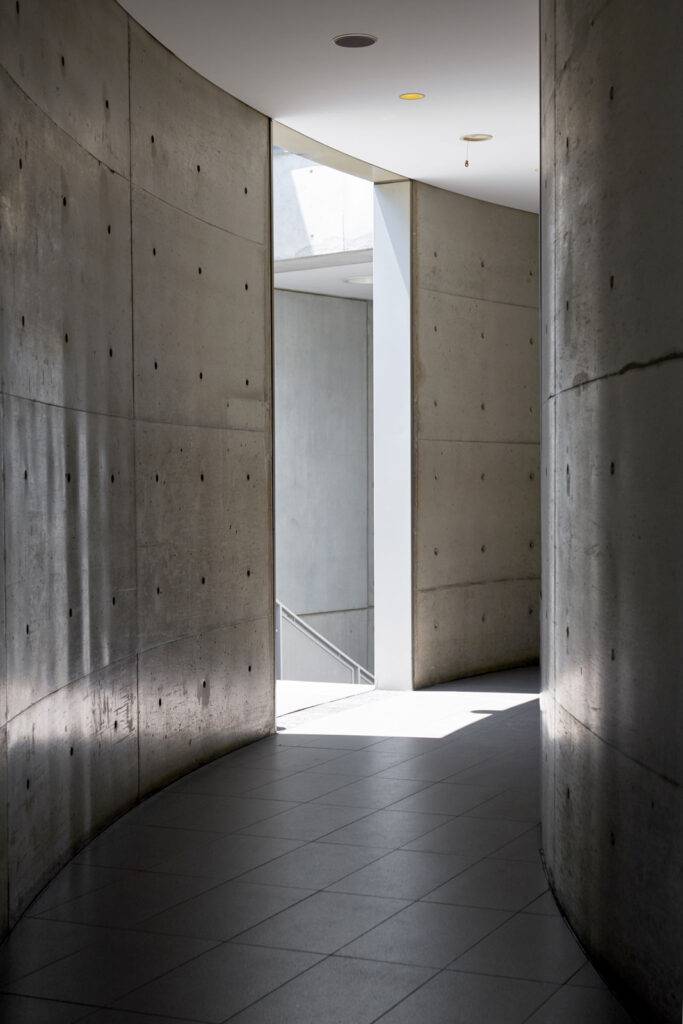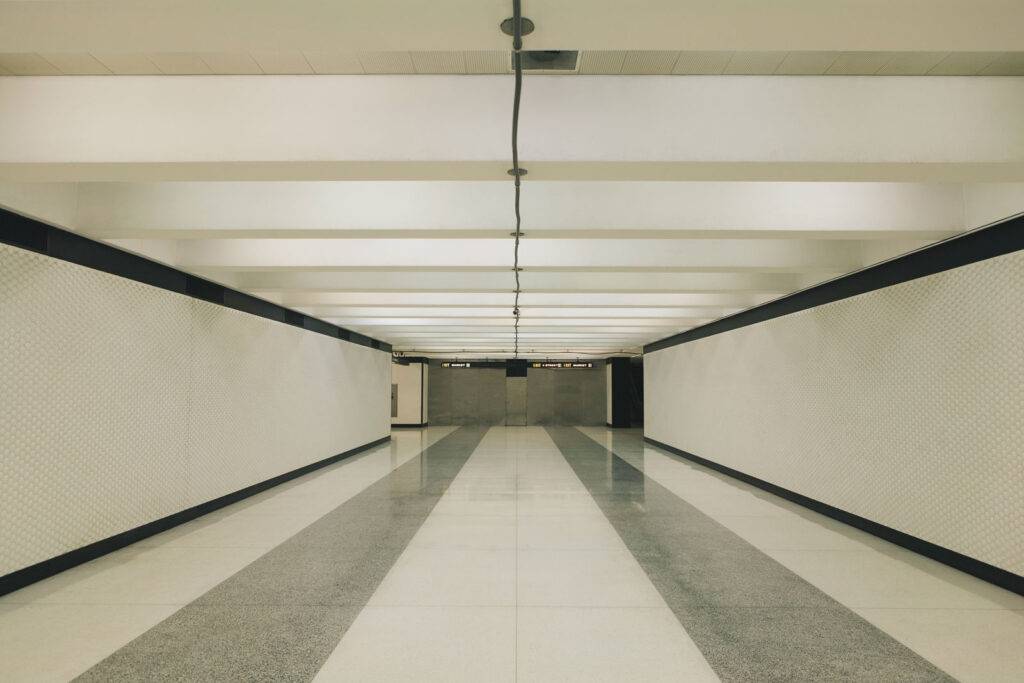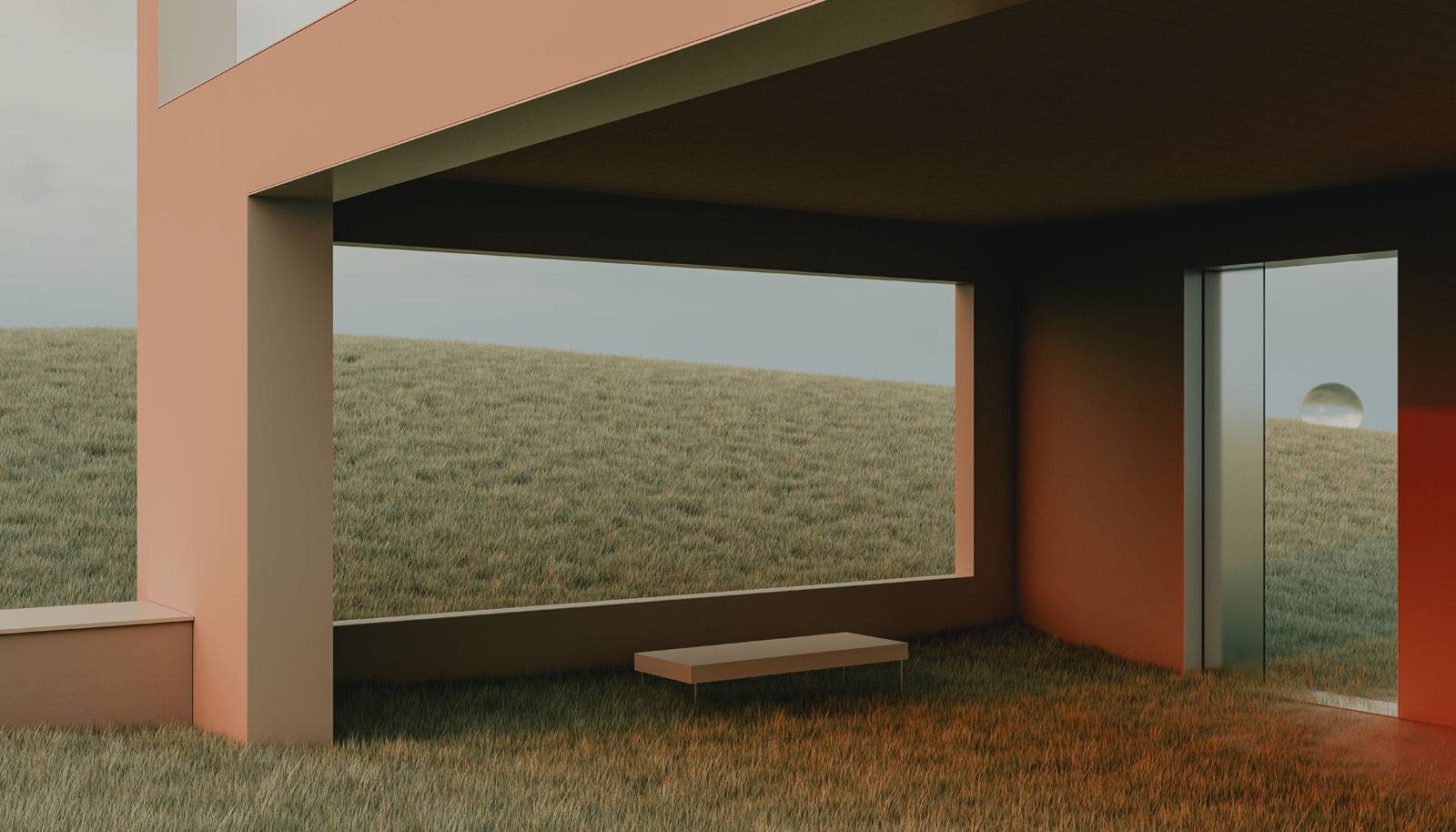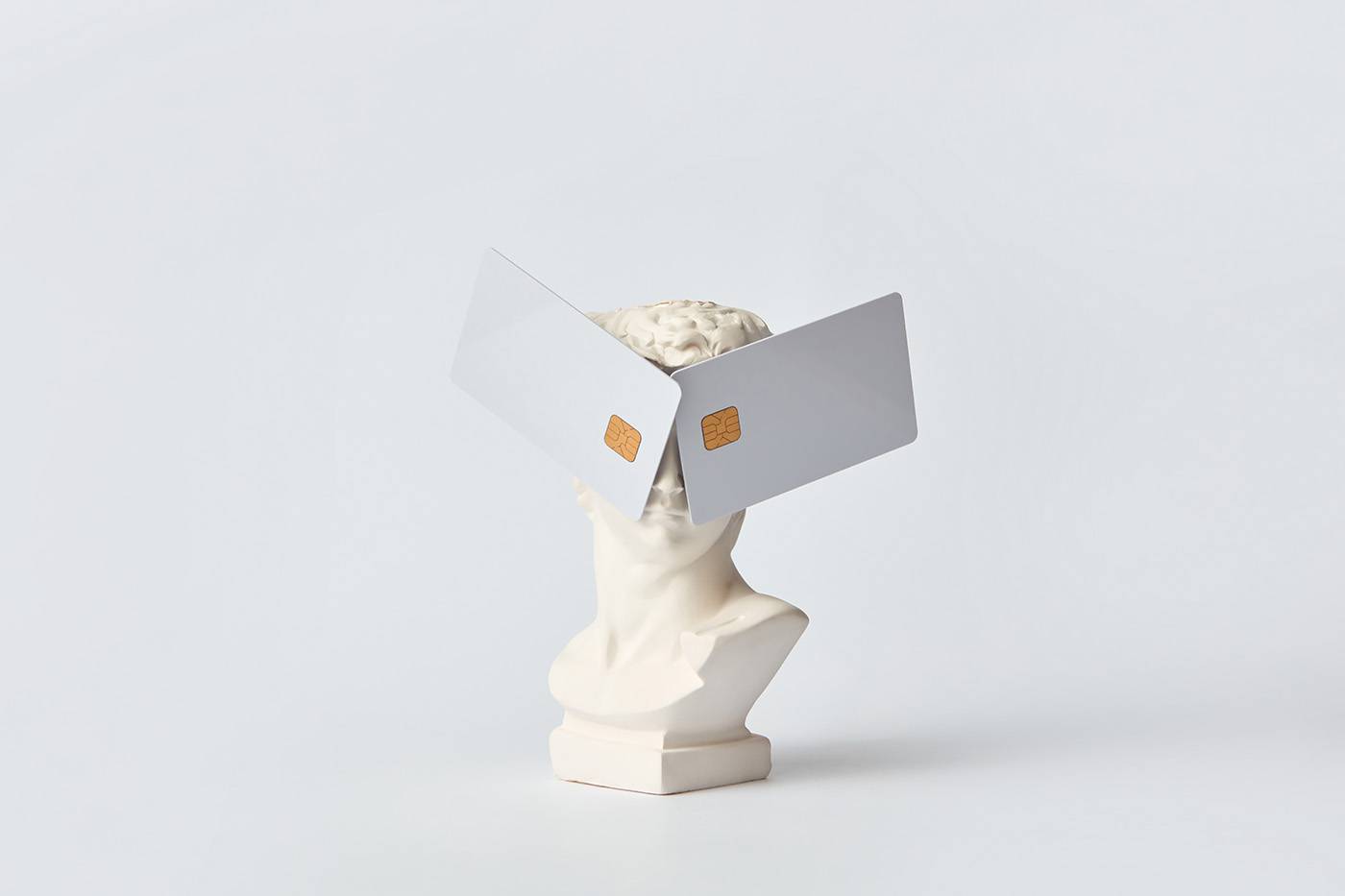You find yourself at a threshold. Not at your origin, and not at your destination. Here, in liminal space, you are in transition or waiting. This architecture imposes a sense of unease, its vacancy resonating that you don’t belong.
This is the aesthetic world of liminal spaces. The rooms between rooms, designed at a human scale but lacking the life that gives them meaning. Corridors, elevators, lobbies, stairwells — places where the ideal is to pass through — are framed as eternities. What would it mean to exist in those hallways forever?
For years, these uninhabited, unnerving spaces have been collected and cataloged online, but they are now surfacing into our culture more widely. While it’s difficult to follow anything originating on 4chan, liminal spaces have branched from an offhand post into core settings of popular TV series and video games. Their stark, bland, or brutalist designs stand in as environments of opaque evil, especially in 80s obsessed pop culture (Stranger Things’ Hawkins National Laboratory being most notable). Another deep fascination of them lies within The Backrooms, a crowdsourced collection of writings and media that build a complete lore out of unsettling architecture. They are environments of tension. And that quality has a hook into our psyche.
Nostalgia of nothingness
As many of us navigated the COVID-19 pandemic, we were faced with a new awareness of the spaces we occupy. At times we were confined to awkward rooms, making new value of our forgotten corners. Or, when vast public realms emptied out, we heard their silence echo. The sameness of our everyday was emphasized by the staggering change. After spending hundreds of days working from your living room, it’s not hard to find beauty in the memories of those cavernous corporate corridors.

We are working through vibe shifts and a great societal feeling of being on a threshold. Not as we were, but not yet in sight of where we’re going. These spaces can poignantly reflect those emotions back to us.
Designing better backrooms
Now, as we see trends curving towards maximalism, bolder self-expression, and creature comforts, we see the subconscious backlash to Backrooms.
Maybe more than a tool for creating tension, liminal spaces serve as a reminder of possibility. Through facing an eternity of sameness, we have stronger desires to create things that feel unique. When designing for humans, we must take in the complete context of experience. Consider the points between purposes. We ask ourselves, “What if this is going to exist forever?” And ultimately, provide more meaning than waiting.
Explore more levels of liminal space
Aaron Bergunder is an Intermediate Graphic Designer on Stocksy’s Design team, working from Victoria, Canada. He aims to use the practice of design as a tool to build healthier, more equitable communities.

























